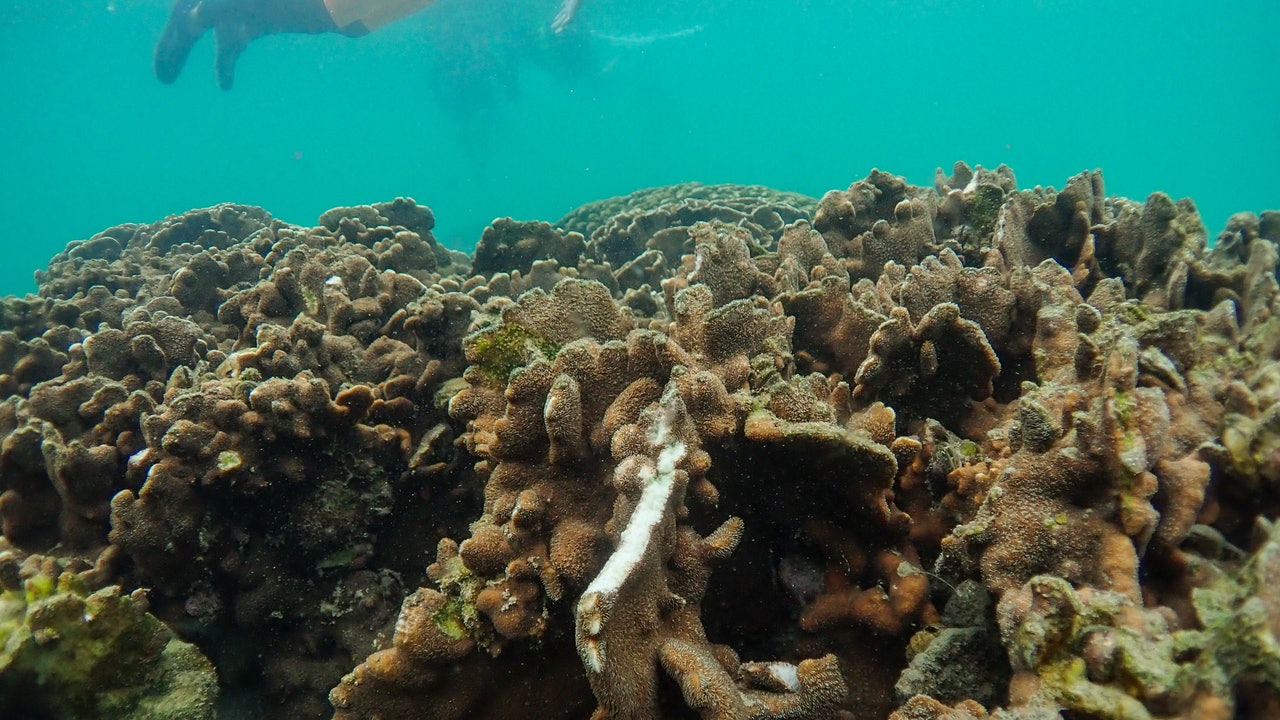Summer is approaching, and many people will go out to sea for water sports to cool off.
However, the World Wildlife Fund Hong Kong (WWF) found that corals in popular diving sites in Hong Kong, such as Kiu Tsui in Sai Kung, were damaged, and some were even damaged to the bone.
WWF also conducted follow-up surveys with divers. Each diver has an average of 10.7 contact with the seabed and one accidental contact with corals per dive. Diving activities are prevalent in Hong Kong.
This year, WWF specially launched a guide card for diving instructors and divers, listing eight precautions for marine life conservation during diving, including paying attention to the kicking direction of fins, and not taking advantage of underwater creatures when shooting.
WWF also recommends that novice divers should go to the sandy ground with less marine life to "make up the bell" after taking the exam, and then go to the coral area to dive when they are ready: "If novice divers can do this well, in fact, a lot of pairs of corals have been reduced. damage".
Summer is hot, diving and canoeing are summer activities that many people love.
According to WWF statistics, there are about 20,000 active divers in Hong Kong, and the number of diving activities has risen sharply since 2020.
WWF recruited 52 divers from June to December last year. With the consent of Shao Fang, they followed each other to dive to record their behavior and potential impact on marine ecology.
The survey observed 102 divers and recorded 1,088 exposures to the seabed, of which 124 were in direct contact with corals and the rest were in contact with sand and rocks.
In addition, the hands and fins of divers touch the seabed for about 70% of the time, and other parts that touch the seabed include elbows, lead belts, and oxygen bottles.
The survey also found that as the diver's seniority increased, the number of contact with the seabed decreased, which WWF estimated was due to more diving experience or better body control.
+5
WWF Marine Conservation Project Manager Su Junyan believes that most of the people who come into contact with corals are unintentional when diving. Coral damage, many of which are located in shallow water near the shore, is suspected to be caused by water activities.
For example, Su said that snorkelers were recorded standing on the coral; a large piece of coral was also flattened, suspected to be caused by canoe paddles.
Su also said that some divers rented boats to go out to sea, and the boat owners broke down without paying attention to whether there were corals at the berth, but when the anchor was lifted, the whole piece of coral may be pulled up.
He explained that once the coral is cracked or disconnected, algae will soon stick to it.
+3
WWF calls on Hong Kong government to designate 30% of Hong Kong waters as marine protected areas by 2030
WWF has launched the first set of diving training guide cards in Hong Kong, which includes diver training guidelines and coral information, etc. There are eight tips to remind divers how to protect the ocean during training, including buckle equipment before diving, and do not touch marine life, etc. Instructors and divers also Available from WWF.
In addition, WWF also produced the "Qiaozui Diving Training Map" based on underwater surveys conducted by 35 experienced divers and instructors, which showed the distribution of coral and sandy land in the west of Qiaozui Island, helping instructors choose suitable sandy areas for training.
WWF also called on the government to designate 30% of Hong Kong's waters as marine protected areas by 2030, and urged the government to formulate a conservation plan with clear goals and timetables as soon as possible to protect marine ecology.
AFCD's coral survey: over 80% of the coverage rate of North Sharp Island is recorded in individual locations Slight coral bleaching Big cup tube star coral lurking, breaking waves, flooding, the first new stony coral species in the waters of the discovery port in 20 years Raising Huang Jinxing's sponsored coral BB was "bullyed" research: the coral bleaching area of ash juvenile has been found in six locations, and the bleaching area has been as high as nearly 60% [Marine garbage] Golf balls fell into the sea and divers caught a large number of "ghost balls" [Marine garbage] From being afraid of water to falling in love with diving art, girls make ghost net installations for environmental protection [Multiple pictures] The winning works of diving photography competition exhibition Hong Kong seaweed forests, rare and spectacular scenery of fish

